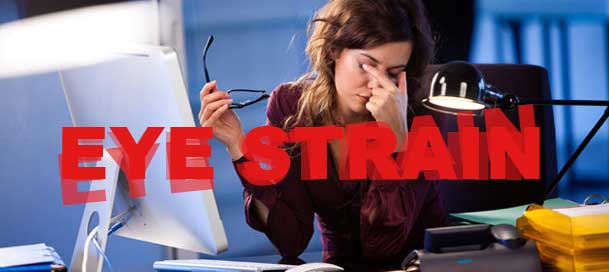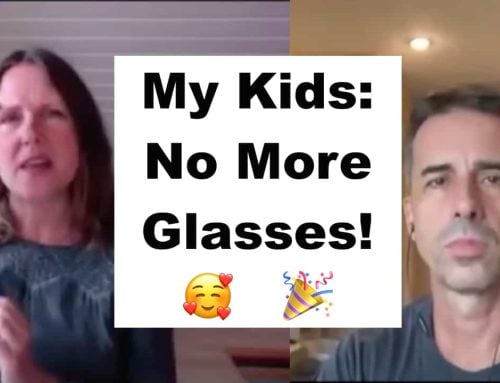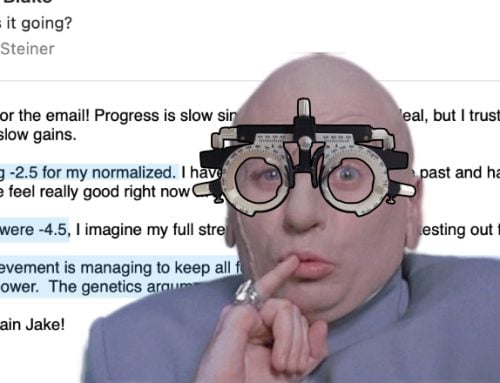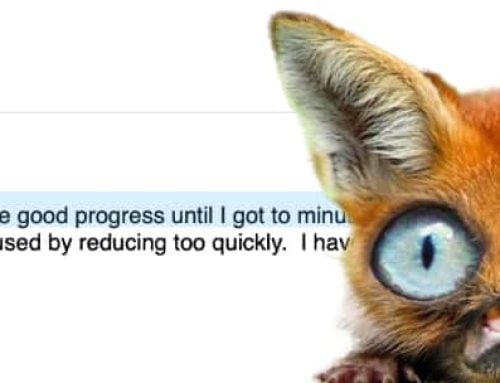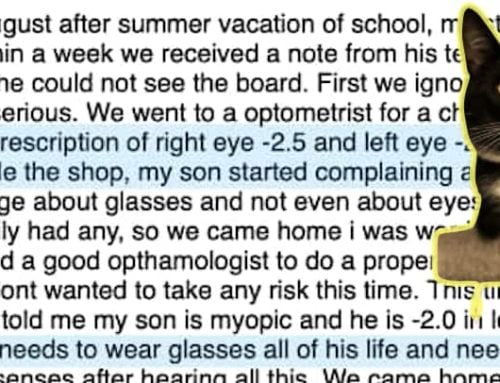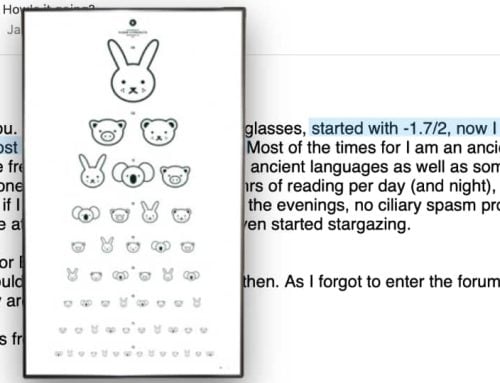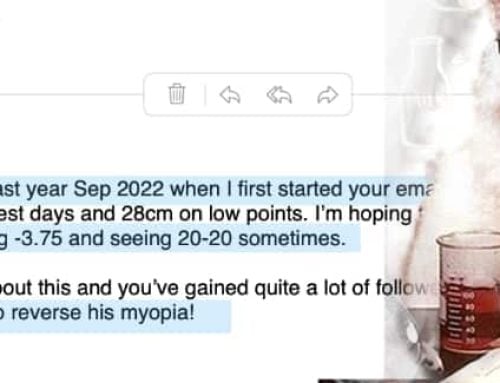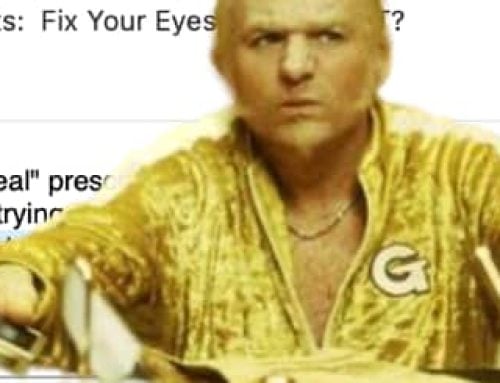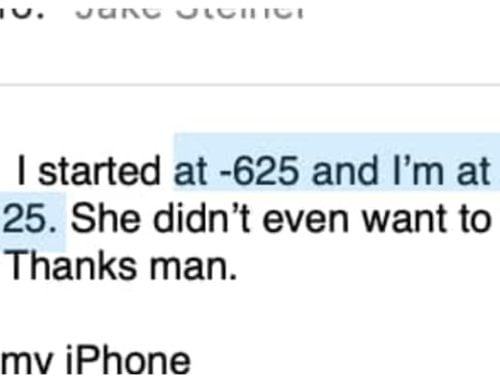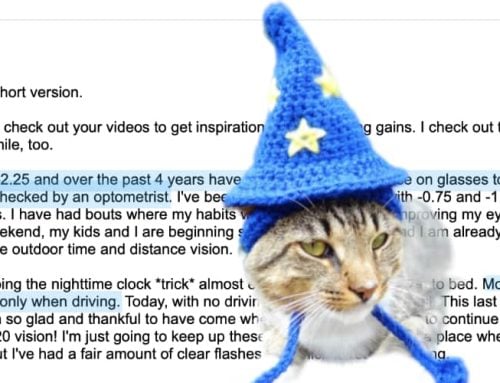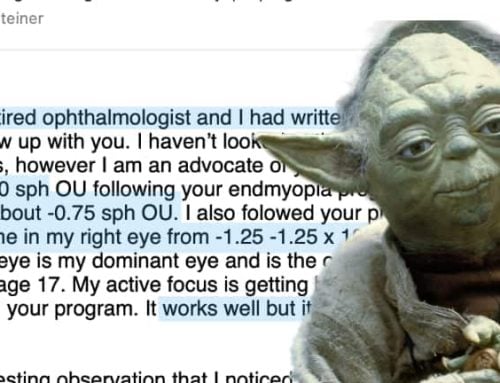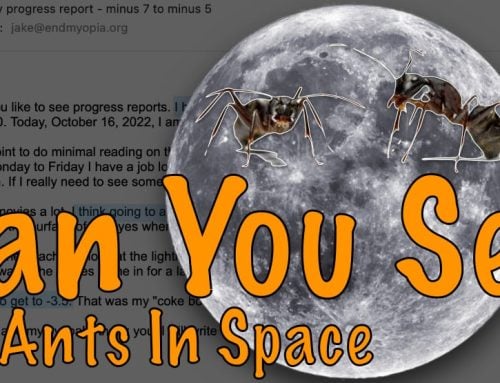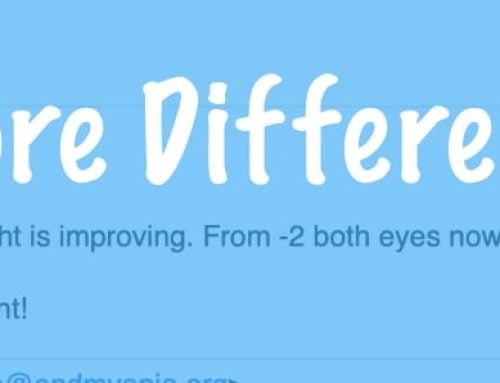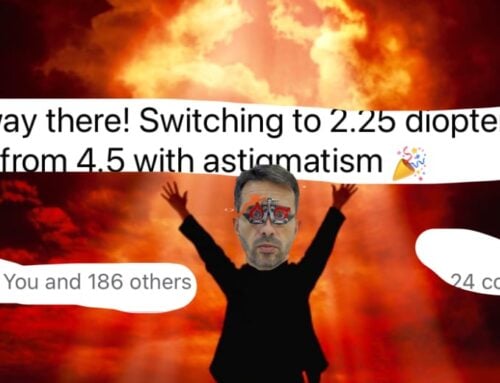Rebecca writes:
![]() So far I’ve found integrating the program into my daily life has not been much of a problem at all. I’m not following it to the letter but revising as necessary to do what I can.
So far I’ve found integrating the program into my daily life has not been much of a problem at all. I’m not following it to the letter but revising as necessary to do what I can.
I wake up in the mornings and go through my routine without my lenses and even as a high myope (-6.5/-7.0), I don’t have any trouble with this. In fact, I find the more time I spend without my lenses, the more I am surprised by what I can see/interpret. Not clearly, obviously, but I’m functional.
Wearing the plus lenses while I’m on the computer at work 8 hours a day has made all the difference in the world for me. I wear +2.50 when I want to do my edge of blur practice, usually first thing in the morning and right after lunch. The rest of the time I wear +2.0 and while it doesn’t really look any different to me than my full prescription I can absolutely feel the strain reduction this provides. No more tension headaches!
I also have a timer that goes off every 15 minutes to remind me to look away from the screen. The most distant thing I have to look at from my desk is a wall 25 feet away but it’s better than nothing. And every two hours or so, I go outside and spend 5 or 10 minutes scanning the horizon, watching birds fly around or just trying to look as far away as I can. This has helped my mood a lot since I have no windows in my office.
The weekends I usually try to do all my reading outside with no lenses on. I can’t see very far but I spend this time doing edge of blur practice and I can push it a few cm further as I go along.
One thing I wasn’t able to clearly tell from the lesson was how much carrot juice to drink. Is it one cup a day?
I’m excited to keep progressing and I’m happy to be able to actively improve my own eyes. Too bad I didn’t know all this 30+ years ago.
—
This is exactly what you want to have happen. What is making the experience for Rebecca?
It’s the way of not passively relying on glasses, not being a spectator, not being just a passenger in the experience. The 20 minute morning activity of no glasses is like an exploration of what’s possible. Can you see, and what can you see? And from there you take a reduced prescription for your close-up work, which helps greatly to reduce all that eye strain you are otherwise experiencing (and are used to, hence don’t notice how much it negatively affects your focusing muscle).
Vision improvement and myopia rehab is a bit of an adventure and an exploration. How much less correction do you actually need, to see? What can active focus do for your clarity of sight?
Once you combine the initial discovery process with building good habits, experiences like Rebecca’s turn into the ones you read later on, from participants who have used these strategies for a number of months. You get tangible improvement in centimeter, and reductions in prescription.
Enjoy some healthy eyesight today.

